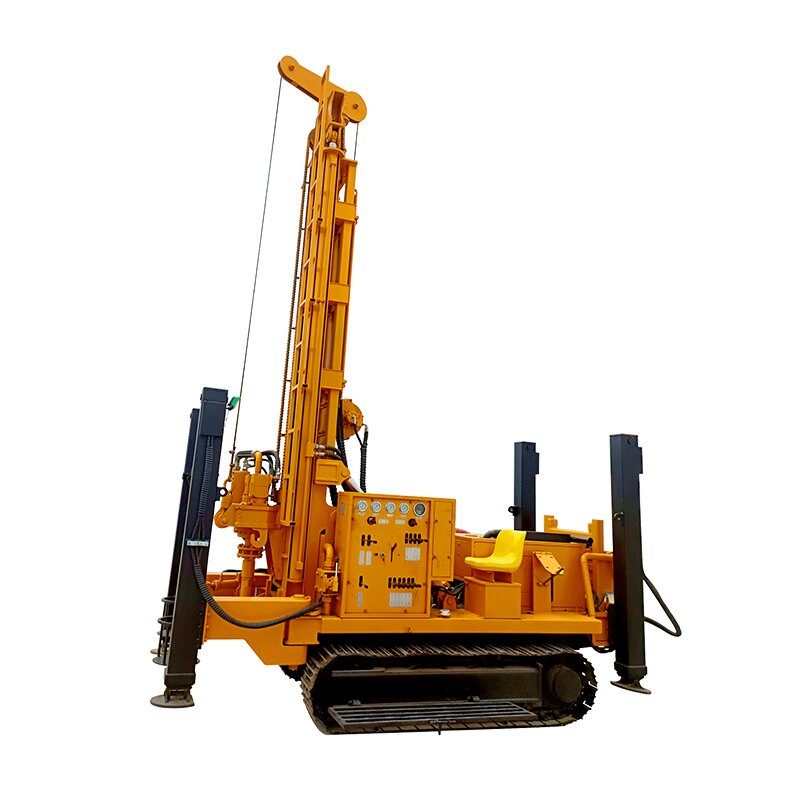How to check if a drill bit matches a water well drilling rig
To see if a drill bit and a water well drill are a good match, you gotta think about these key things so you can drill safely and well, and make your bit and drill last longer:
1. The end of the drill bit has to fit the drill is holding part.
End Types: Water well drills use different kinds of ends on their bits, like round ones, six-sided ones, pointy ones, and some other special ways they connect. You gotta make sure the bit is end matches what your drill can hold. For example, some big drills might screw the bit right onto the drill pipe.
End Sizes: The thickness of the bit is end has to be just right for the drill is holder. If it's too big or too small, it won't stay put, it'll wobble or slip while you are drilling, and that's not good for the hole or for safety.

2. The kind of drill bit has to be right for how your water well drill works.
How It Drills: Water well drills work in different ways, like just spinning, hammering, or doing both. Different drills need different bits.
Spinning Drills: These mostly just spin the bit to cut through the ground. They usually use bits with teeth, spiral-shaped bits, or ones that take out a core sample.
Hammering Drills: These bang the bit up and down to smash through rock. They need special strong bits for that.
Combo Drills: These can spin and hammer, so you can pick the right way to drill depending on the ground.
Special Drill Features: Some water well drills have extra stuff like reverse circulation or down-the-hole hammers. These need special bits made just for them. Like, a down-the-hole hammer drill needs a high-pressure or low-pressure down-the-hole hammer bit.

3. The size of the drill bit has to work with what your water well drill can do and what you need to drill.
Hole Size: The bit is width has to match the size of the water well you are trying to make. Also, you gotta think about the biggest bit your drill is strong enough to spin. If you go too big, you could overload the drill.
How Deep you are Going: The part of the bit that actually cuts needs to be long enough for how deep you want to drill. For really deep wells, you'll need to connect the right bit to long drill pipes. Plus, your drill needs to be strong enough to lift all that pipe and the bit, and it needs enough power to turn a big bit way down deep.
4. The material and design of the drill bit have to be suitable for the type of ground you are drilling in.
How Hard the Ground Is: Different types of ground – like sand, clay, or hard rock – need bits made of different materials and with different designs. For example, if you are drilling through hard rock, you'll need a bit with really tough metal pieces or even diamonds in it.
What the Ground Looks Like: If the ground is broken up or has a lot of gravel, you might need a special kind of bit that can drill through that stuff better and keep the sides of the hole from collapsing.
5. The bit is power ratings have to match what your water well drill can handle.
How Fast It Spins: Some bits work best when they're spinning at a certain speed. You gotta make sure your drill can spin at the right speed for the bit you are using. Too fast can overheat or break the bit; too slow won't drill very well. Some drills let you change the speed, which is good for different bits.
How Much Force It Needs: Drilling through hard ground or using a big bit needs a lot of twisting power from the drill. Make sure your drill has enough oomph to turn the bit properly.
How Hard It Hits: If you are using a drill that hammers, you need to use a bit that's made for hammering and set the right amount of hits per minute and how hard each hit is.
If you have any questions during the search process, you can click here to communicate with us anytime:
Water Well Drilling rig, borehole machine, China drilling rig Manufacturers-pearldrill

